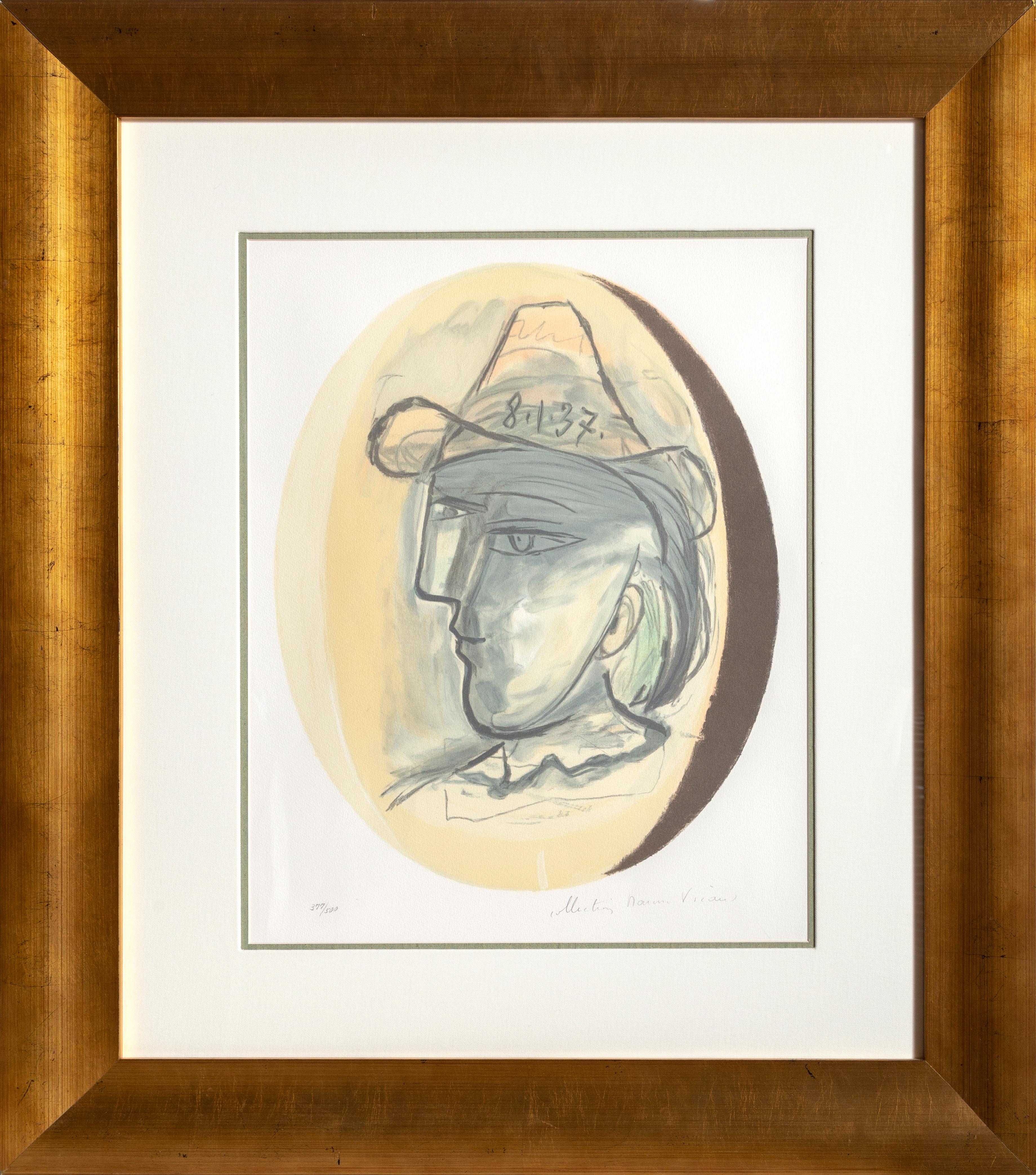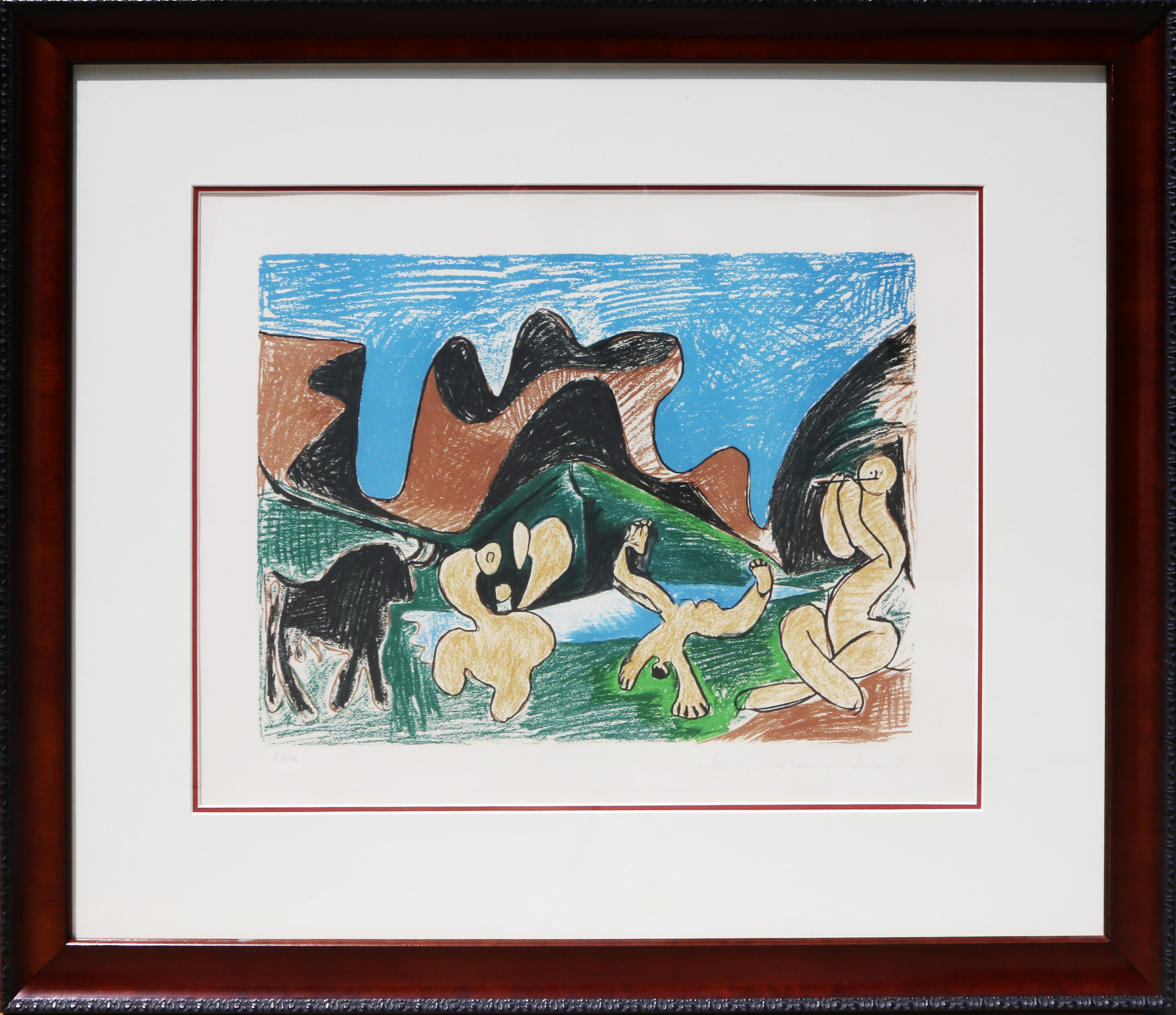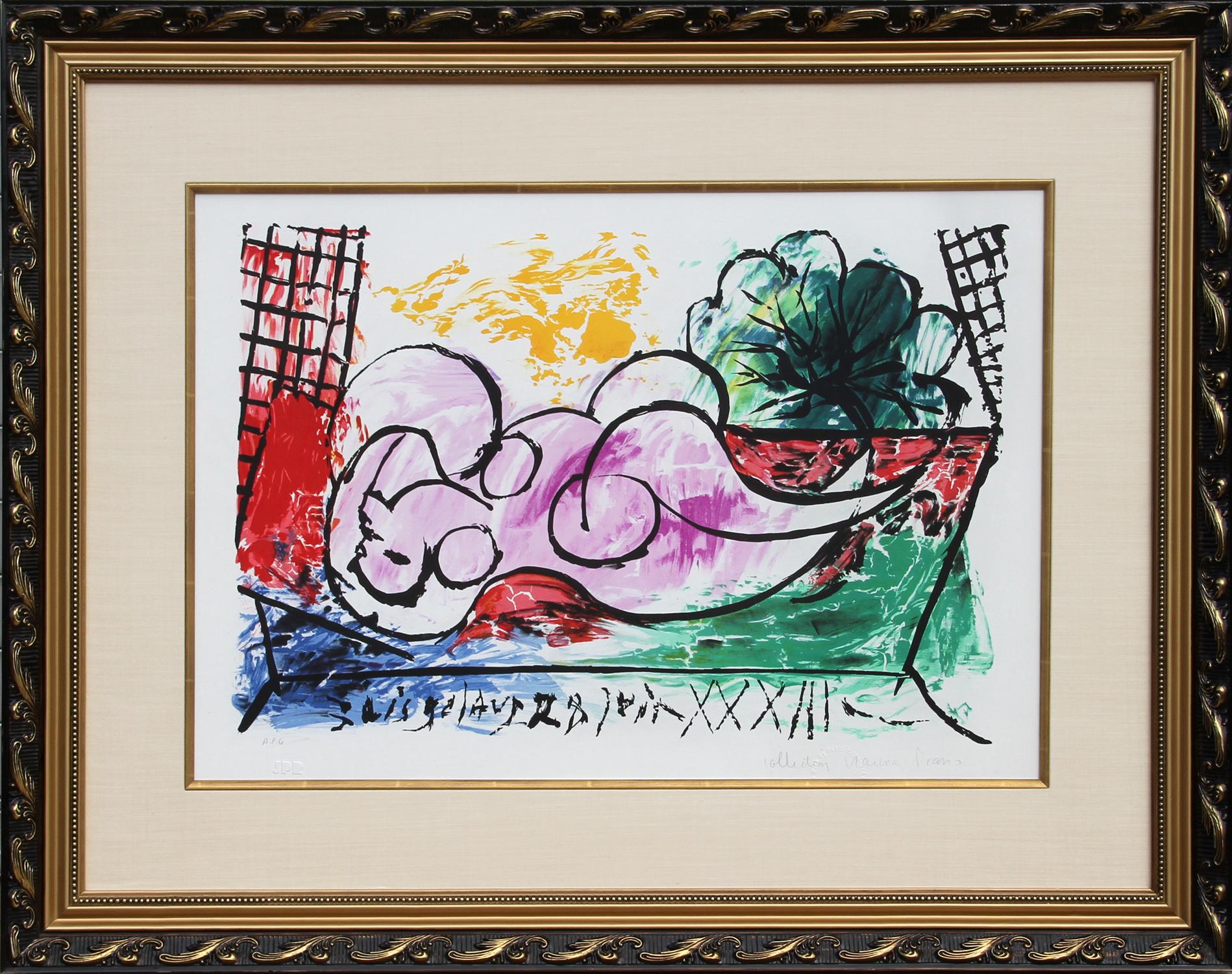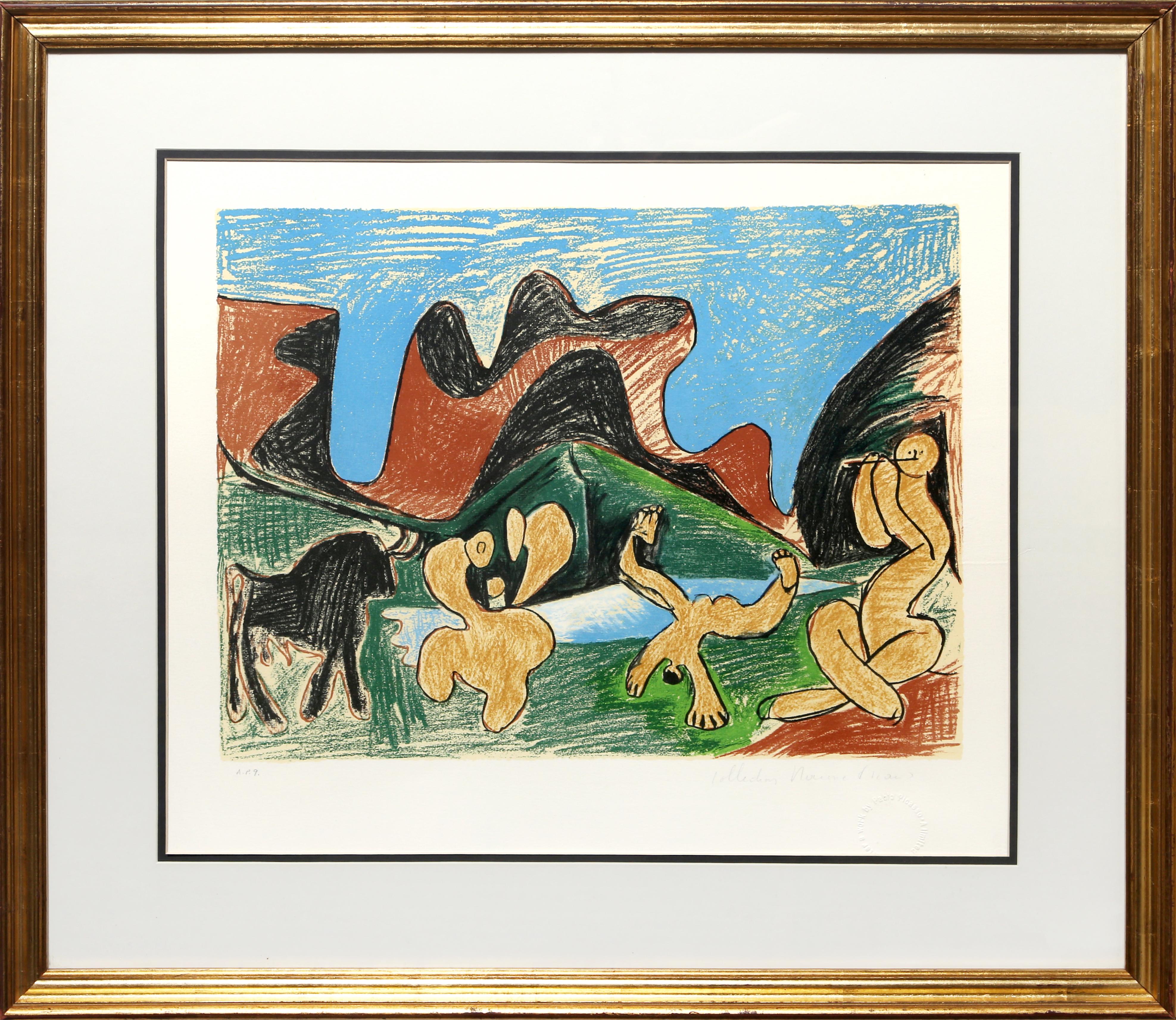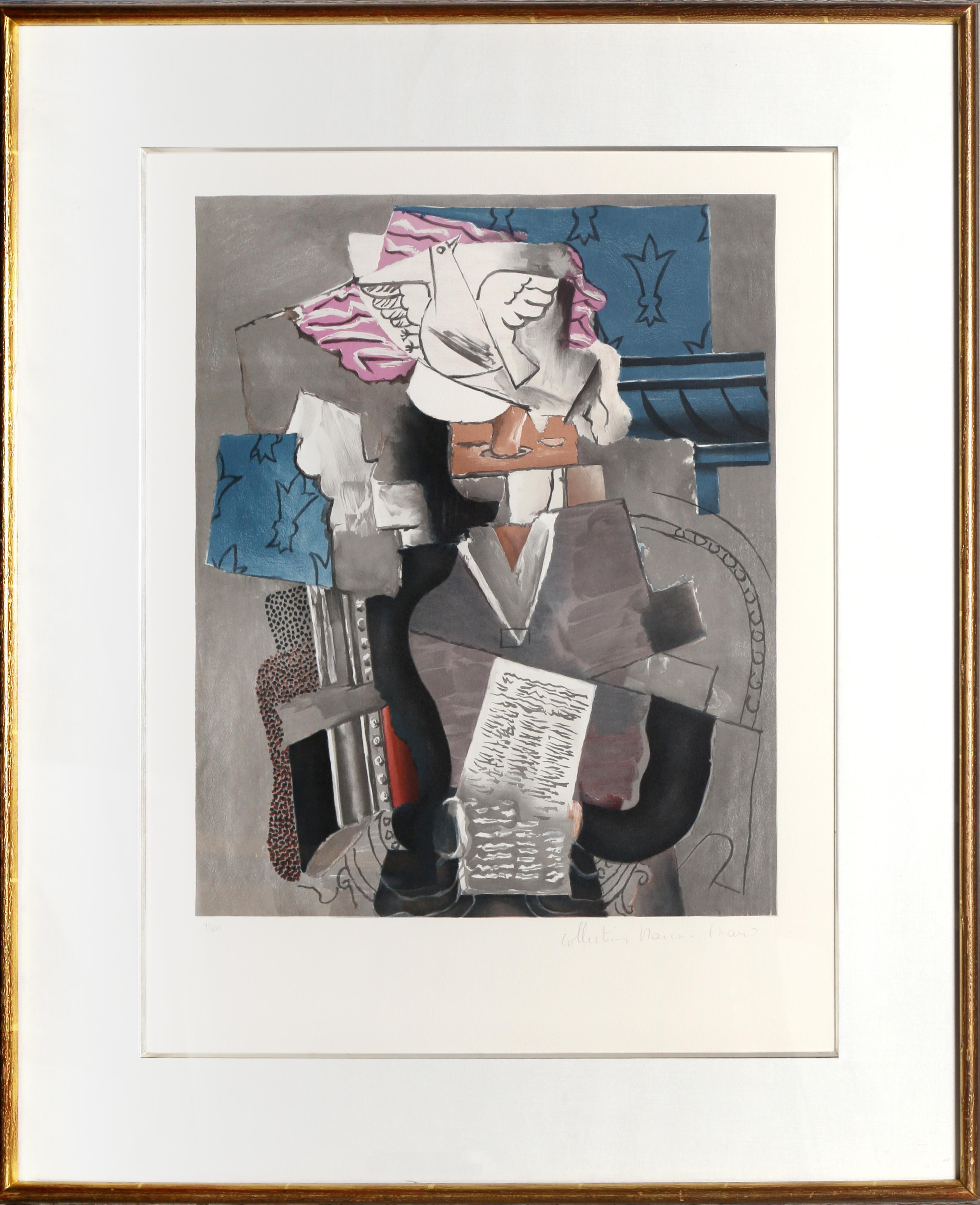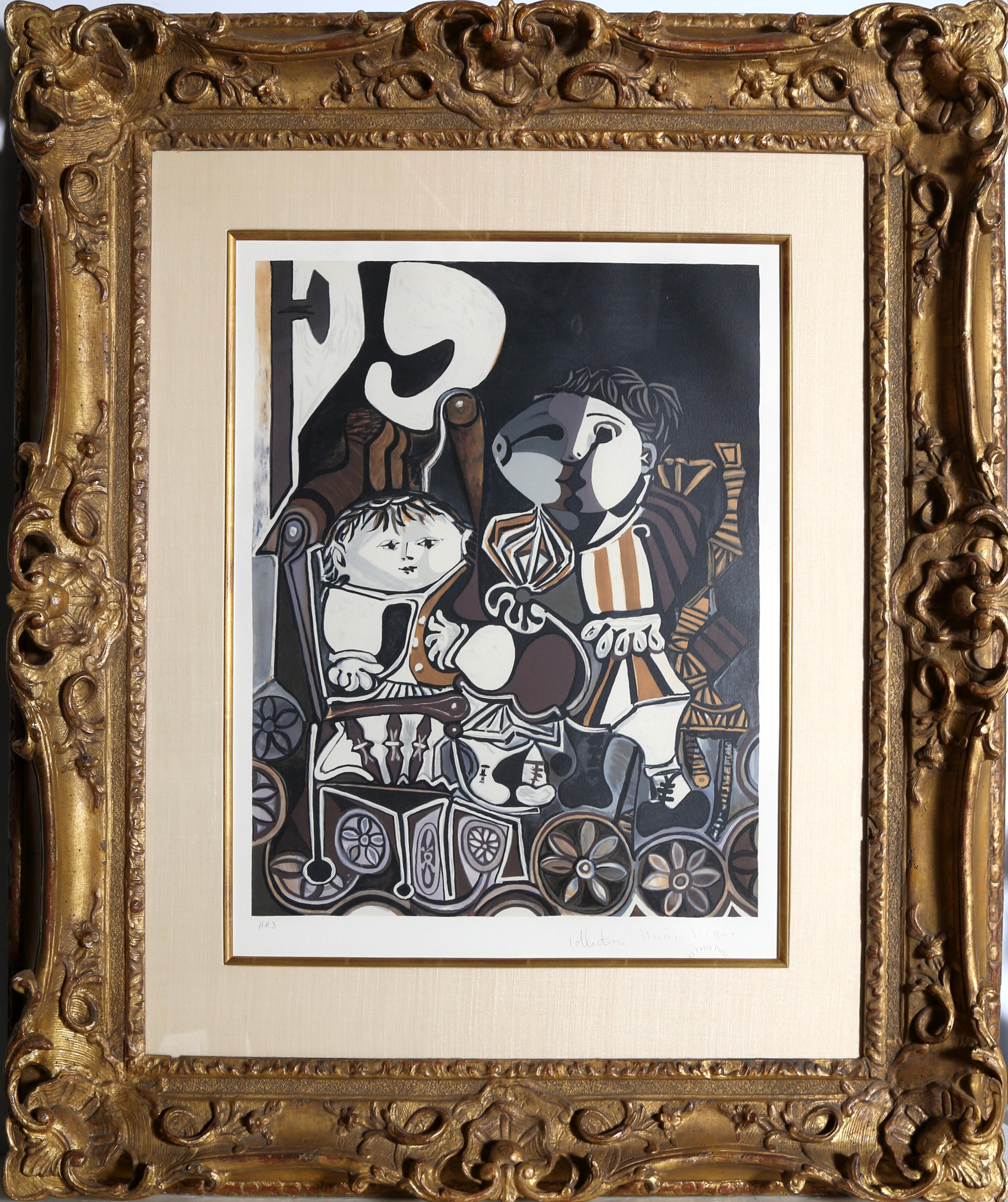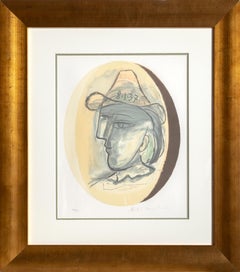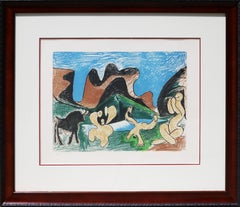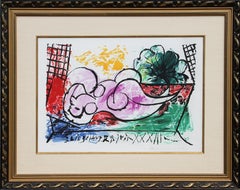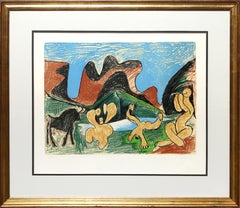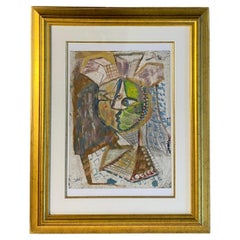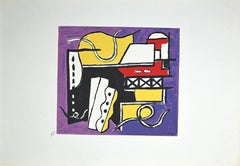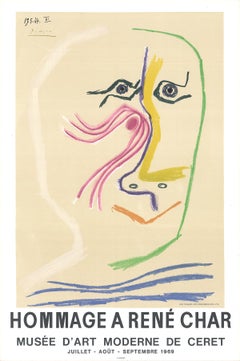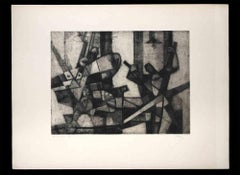Items Similar to Course de Taureaux, Cubist Lithograph after Pablo Picasso
Want more images or videos?
Request additional images or videos from the seller
1 of 6
Course de Taureaux, Cubist Lithograph after Pablo Picasso1982
1982
$13,000
£10,121.12
€11,509.36
CA$18,690.30
A$20,525.58
CHF 10,718.84
MX$244,981.30
NOK 135,797.45
SEK 126,568.57
DKK 85,959.94
About the Item
Comprised of shapes with lines and sharp angles, this composition depicting the running of the bulls is hectic and energized. Rendered in gradiated rainbow colors, the animals in this Pablo Picasso print run along the street surrounded by buildings lacking realistic perspective. A lithograph from the Marina Picasso Estate Collection after the Pablo Picasso artwork "Course de Taureaux". The original piece was completed in 1927. In the 1970's after Picasso's death, Marina Picasso, his granddaughter, authorized the creation of this lithograph by Laurent Marcel Salinas, who worked closely with Picasso during his lifetime. The limited edition print run was completed and published by Marina Picasso in conjunction with Jackie Fine Arts in 1982. The lithograph is printed on French Arches paper, ink-stamped by the Estate verso, and hand-signed and numbered (AP 7) by Marina Picasso on the recto. The embossed seal of the Estate is lower right and the printer's chop, lower left. The work is presented in an excellent gold wood frame using all acid-free conservation materials.
Course de Taureaux
Pablo Picasso (After), Spanish (1881–1973)
Portfolio: Marina Picasso Estate Lithograph Collection
Date: of Original: 1927 Year Printed: 1982
Lithograph on Arches, Signed and numbered in pencil
Edition of 500, 34 AP
Size: 22 in. x 29 in. (55.88 cm x 73.66 cm)
Frame Size: 29 x 37 inches
Printer: Laurent Marcel Salinas (Chromist)
Publisher: Jackie Fine Arts in conjunction with Marina Picasso
Reference: J-275
- Creation Year:1982
- Dimensions:Height: 29 in (73.66 cm)Width: 37 in (93.98 cm)
- Medium:
- Movement & Style:
- After:Pablo Picasso (1881-1973, Spanish)
- Period:
- Condition:
- Gallery Location:Long Island City, NY
- Reference Number:Seller: RO451621stDibs: LU46614229942
About the Seller
4.9
Platinum Seller
Premium sellers with a 4.7+ rating and 24-hour response times
Established in 1979
1stDibs seller since 2014
3,176 sales on 1stDibs
Typical response time: 1 hour
- ShippingRetrieving quote...Shipping from: Long Island City, NY
- Return Policy
More From This Seller
View AllTete, Framed Cubist Lithograph after Pablo Picasso
By Pablo Picasso
Located in Long Island City, NY
A lithograph from the Marina Picasso Estate Collection after the Pablo Picasso painting "Tete". The original painting was completed in 1937. In the 1970's after Picasso's death, Mar...
Category
1980s Cubist Portrait Prints
Materials
Lithograph
Bacchanale, Cubist Lithograph after Pablo Picasso
By Pablo Picasso
Located in Long Island City, NY
A lithograph from the Marina Picasso Estate Collection after the Pablo Picasso painting "Bacchanale". The original painting was completed circa 1922. In the 1970's after Picasso's d...
Category
1980s Fauvist Figurative Prints
Materials
Lithograph
Femme Endormie, Cubist Lithograph after Pablo Picasso
By Pablo Picasso
Located in Long Island City, NY
This Pablo Picasso print portrays a nude woman who has fallen asleep. The figure reclines backward toward the viewer, resting on her back. The artist's use of flowing line and the br...
Category
1980s Cubist Portrait Prints
Materials
Lithograph
Bacchanale, Cubist Lithograph after Pablo Picasso
By Pablo Picasso
Located in Long Island City, NY
A lithograph from the Marina Picasso Estate Collection after the Pablo Picasso painting "Bacchanale". The original painting was completed circa 1922. In the 1970's after Picasso's d...
Category
1980s Fauvist Figurative Prints
Materials
Lithograph
Personnage et Colombe, Cubist Lithograph after Pablo Picasso
By Pablo Picasso
Located in Long Island City, NY
A lithograph from the Marina Picasso Estate Collection after the Pablo Picasso painting "Personnage et Colombe". The original painting was completed in 1913. In the 1970's after Pic...
Category
1980s Cubist Still-life Prints
Materials
Lithograph
Claude et Paloma, Cubist Lithograph after Pablo Picasso
By Pablo Picasso
Located in Long Island City, NY
A lithograph from the Marina Picasso Estate Collection after the Pablo Picasso painting “Claude et Paloma”. The original painting was completed in 1950. In the 1970’s after Picasso’s...
Category
1980s Figurative Prints
Materials
Lithograph
You May Also Like
Large French Cubist Abstract Painting, Manner of Picasso, Framed Mixed-Media
By (after) Pablo Picasso
Located in Miami, FL
Large French Cubist Abstract Painting, 2008 — Manner of Picasso, Framed Mixed-Media Work,
French Cubist Abstract Painting, Picasso-Inspired Modernist Artwork, 2008,
Contemporary Fren...
Category
20th Century French Mid-Century Modern Paintings
Materials
Wood, Paint, Paper
Composition - Lithograph after Fernand Leger - Mid-20th Century
By Fernand Léger
Located in Roma, IT
Composition is a screen print realized after Fernand Léger in the mid-20th Century.
Monogrammed in plate and hand numbered in pencil lower right.
The composition is part of a colle...
Category
Mid-20th Century Cubist Figurative Prints
Materials
Lithograph
Picasso-Hommage A Rene Char-Original Lithograph VINTAGE
By Pablo Picasso
Located in Brooklyn, NY
Homage to René Char is an original lithographic poster created by Pablo Picasso in 1969 for the Musée d'Art Moderne de Céret, France. The poster was engraved by Henri Deschamps...
Category
20th Century Cubist Prints and Multiples
Materials
Lithograph
$560 Sale Price
20% Off
Les Imprimeurs - Original Etching - Mid-20th Century
Located in Roma, IT
Les Imprimeurs is an original etching realized by an unknown artist in the mid-20th Century.
Good conditions.
Numbered, edition 1/30.
Hand-signed but illegible.
The artwork is de...
Category
Mid-20th Century Modern Abstract Prints
Materials
Etching
After Georges Braque - Antiborée - Lithograph
Located in Collonge Bellerive, Geneve, CH
Lithograph after Georges Braque.
Signed in the plate
Edition of 150
Dimensions: 76 x 117 cm
Bibliography:
« Les Métamorphoses de Braque» of Heger de Loewenfeld and Raphaël de Cuttoli , Editions FAC, Paris, 1989.
In 1961 Georges Braque decided with his laidary friend Heger de Loewenfeld to pick up certain of his works to in order to create artworks, this beautiful litograph is one of them.
Héméra in the Mythology:
In Greek mythology Hemera was the personification of day and one of the Greek primordial deities. She is the goddess of the daytime and, according to Hesiod, the daughter of Erebus and Nyx (the goddess of night). Hemera is remarked upon in Cicero's De Natura Deorum, where it is logically determined that Dies (Hemera) must be a god, if Uranus is a god. The poet Bacchylides states that Nyx and Chronos are the parents, but Hyginus in his preface to the Fabulae mentions Chaos as the mother/father and Nyx as her sister.
She was the female counterpart of her brother and consort, Aether (Light), but neither of them figured actively in myth or cult. Hyginus lists their children as Uranus, Gaia, and Thalassa (the primordial sea goddess), while Hesiod only lists Thalassa as their child.
The father of Cubism
Three Cubist that distinguishes art historian periods were initiated and developed by Georges Braque: The Cubist Cézanne (1907-1909), Executive (1909-1912) and synthetic (1912-1922).
Post-Impressionist and fawn, Braque no longer adheres to the contingency of a decorative way or the other. Cézanne’s paintings exhibited at the Grand Palais during the retrospective of 1907 are a revelation: Cézanne sought and invented a pictorial language. In his footsteps, Braque went to the South with the reasons of the Master. He returned with Estaque landscapes and surprising Ciotat it keeps Cezanne geometric model and retains the “passages” continuity from one surface to another to create the sensation of “turning around” of the object represented. But he wants to go after the consequences of the vision of Cezanne. In his paintings Houses in L’Estaque (1908) it simplifies the volumes of houses, neglects detail by removing doors and windows: the plastic rhythm that builds the table. Large Nude , a masterpiece of the period, can be considered the first work of Cézanne cubism .
Systematizing and deepening Braque discoveries open the door analytical cubism. In 1909, his painting became more cerebral than sensual. The pattern is recreated in the two-dimensionality of the canvas, leaving aside any illusionistic perspective. In Still Life with Violin, objects are analyzed facets according to their characteristic elements, each facet referring to a particular view of the object. There are so many facets of points selected view: Table reflects the knowledge of the object and the ubiquity of the eye. Moreover, Braque is looking for the essence of the objects in the world rather than their contingency, which explains the absence of light source and use of muted colors (gray, ocher), contingent aspects of the object . But formal logic has stepped facets, erased any anecdote to the object and ultimately led to his painting a hermetic more marked on the edge of abstraction (see the series of Castle Roche-Guyon ).
Braque, anxious to keep the concrete and refusing at all costs that the logic of Cubism takes the paintings to abstract, reintroduced signs of reality in his paintings in 1912 marks the beginning of Synthetic Cubism. Historians speak of “signs of real” rather than reality because what interests Braque, this is not to put reality into a table, but to create a painting which, by its language, refers to the real. To do this, he invented two major techniques XX th century inclusions and contributions. The inclusions consist of painting objects that have no real depth, materials (wallpaper in Nature morte aux playing cards faux wood is a pictorial inclusion) or letters (calligraphic inclusion in Portuguese ), made first brush and a few months later stencil. Contributions are defined in contrast with the collage on canvas of foreign materials: glued or sand paper, sawdust, etc.. Regarding the collages, Braque used for the first time in September 1912 a piece of adhesive paper imitating faux wood Compote...
Category
1950s Cubist Animal Prints
Materials
Lithograph
Picasso-172 Dessins Recents Lithograph Vintage
By Pablo Picasso
Located in Brooklyn, NY
This original exhibition poster was designed and printed by Mourlot for Picasso’s exhibition at Galerie Louise Leiris in Paris. It features a drawing by Picasso entitled "The Painter...
Category
20th Century Cubist Prints and Multiples
Materials
Lithograph
$200 Sale Price
20% Off
More Ways To Browse
Homage To Dufy
Humorous Art Prints
Jean Marais Lithograph
Martinet Hand Prints
Pablo Picasso Sketches
Puffin Prints
Stan Washburn
Thomas Hart Benton Exhibition Poster
Woodblock Bird Prints
Blue Dog Tiffany
Chromolithograph Eggs
Icelandic Falcon
Le Picador
George Rodrigue Blue Dog Paintings
Jeu De La Cape
New Orleans Jazz Festival
Ori Reisman
Owl Woodcut
